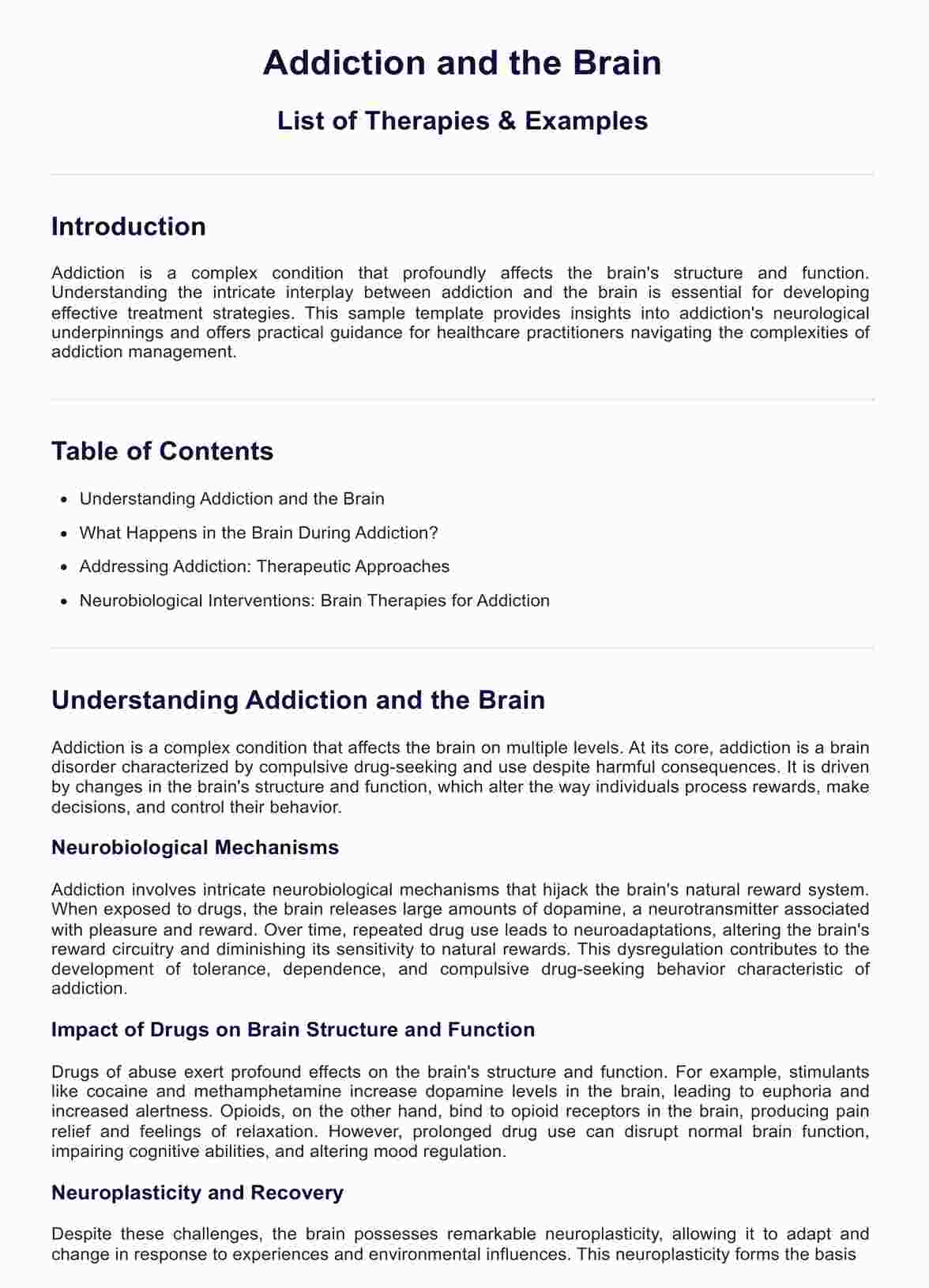During addiction, the brain undergoes changes in its reward circuitry, including alterations in neurotransmitter levels, particularly dopamine. This leads to compulsive drug-seeking behavior and diminished sensitivity to natural rewards.

Addiction and the Brain: List of Therapies
Explore the relationship between addiction and the brain, learn about various therapies, and access a free PDF with examples of effective treatment strategies.
Addiction and the Brain: List of Therapies Template
Commonly asked questions
Addiction and narcissism are distinct conditions, but some individuals with addiction may display narcissistic traits. However, addiction is primarily driven by neurological and psychological factors rather than personality traits like narcissism.
The 5 recovery skills include coping strategies for managing cravings and triggers, building a supportive network, developing problem-solving skills, practicing self-care, and cultivating resilience in the face of setbacks.
EHR and practice management software
Get started for free
*No credit card required
Free
$0/usd
Unlimited clients
Telehealth
1GB of storage
Client portal text
Automated billing and online payments











